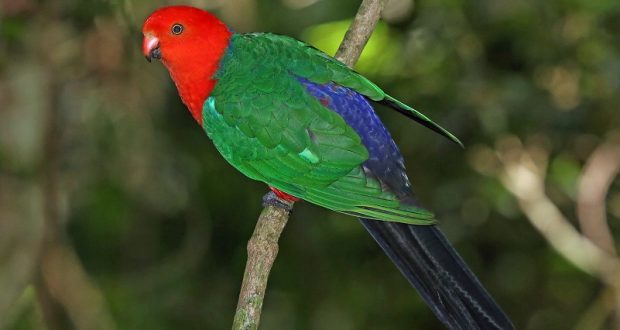Contributed by Len McKenzie, YAAS —
Australia, the land “Down Under,” is an island, a country (the world’s sixth largest geographically), and a continent (the world’s smallest).
Having no land borders, the Australian mainland —“the lowest, flattest and oldest continental landmass on Earth”— and its satellite islands collectively boast more than 37,000 miles of coastline, embracing an impressive diversity of landscapes, flora and fauna, including more than 800 species of birds.
Matthew Matthiessen, recently named CEO of the John C. Fremont Healthcare District in Mariposa, is also known to local residents who have attended some of his slide programs presented by the Yosemite Area Audubon Society (YAAS) as an extraordinary birder and consummate bird photographer.
An engaging storyteller and photo artist who has previously regaled local audiences with entertaining slide talks featuring his exploratory adventures in Peru, Brazil, Cuba, Ethiopia, Borneo and Uganda, Matthiessen will visually take YAAS viewers on another virtual tour Thursday, Dec. 14, this time to Australia. His slide presentation, “Birds of Australia,” will begin at 7 p.m. at the Mariposa Methodist Church parish hall on 6th Street in downtown Mariposa.
Australia is probably best known for its incredible mammals. But the country is also a premier birding destination, not only because of its avian beauty and diversity, but also because of the uniqueness of its avian population. The high number of endemic species—species that occur only there and nowhere else due to the island’s geographic isolation—makes the birding experience that much more exciting and enjoyable.
In October/November 2016, Matthiessen visited the Australian states of New South Wales and Queensland. He will be sharing a selection of photos and stories of the birds and mammals he experienced, ranging from tiny fairywrens to massive emus and amazing mammals, including an array of kangaroos.
As he has in his earlier presentations, Matthiessen will also undoubtedly picture other Australian wildlife as well as touch on the country’s history and culture.
A University of Tennessee graduate, Matthiessen began birding while growing up in Thailand, developing a lifelong love for international birding. He has since pursued his birding passion in many countries throughout the world and captured thousands of images through his camera lens.
Matthiessen’s adventures have also produced some memorable, heart-pounding experiences. He has lived through two bloody coups—a successful one in Thailand and a failed one in Zambia. He has been charged by an elephant, stalked by a lion and threatened by a crocodile. He has kissed a cobra, push-started a Jeep amidst a lion pride, had the spotlight die while next to a leopard, captured a 14-foot python and almost tripped over a sleeping silverback gorilla. He will likely highlight some of those escapades in his presentation.
Like all Yosemite Area Audubon programs, Matthiessen’s presentation is open and free to the public, although donations to defray program costs and to support the chapter’s local activities are welcome. Call (209) 742-5579 for more information about the program.
Audubon field trips in December will be the annual Christmas bird counts in the central Sierra foothill and mountain area communities. The Mariposa bird count will occur on Saturday, Dec. 16; the Yosemite CBC will follow on Sunday, Dec. 17; and the Oakhurst count is scheduled for Saturday, Dec. 30.
Visit www.yosemiteaudubon.org or call (209) 742-5579, (209) 966-2547 or (559) 683-6994 for more information. For additional details about the Christmas bird counts, click here.
The mission of the National Audubon Society, the namesake of noted 19th-century naturalist and bird painter John James Audubon; its state affiliate, Audubon California; and local chapters such as the Yosemite Area Audubon Society is to conserve and restore natural ecosystems, focusing on birds, other wildlife and their habitats for the benefit of humanity and the earth’s biological diversity.




